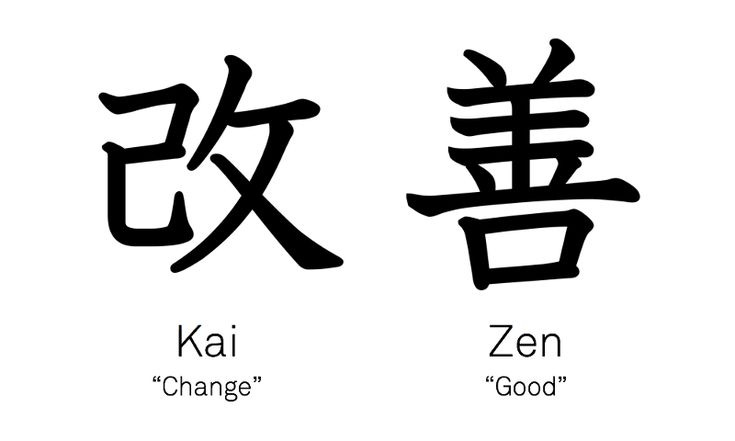Kaizen, Kettlebell Training, and How to Learn Anything — 6 Ideas
Six ideas that I’ve been thinking about this past week
Here are six ideas that I’ve been thinking about this past week that are helping me improve my body, mind, and spirit. I hope that they help you as well.
If this is your first time reading, subscribe here.
One quick thing:
If there is a recent essay or edition that has sparked your curiosity, given you a new idea, or in any way contributed positively to your daily life please consider supporting Write & Lift with a $5 monthly subscription. I want, more than anything for W&L to remain something you look forward to reading each week and your support helps me to gauge if I am on the right track. While I don’t write to make money, any small contribution is greatly appreciated. Additionally, if there is a specific topic, idea, or book you’ve read recently that you’d recommend I dig into, let me know in the comments below!
1. Kaizen
Lay a brick each day and build a temple.
I’ve carried this maxim with me for a long time, but was surprised to find it had a name in Japanese philosophy — Kaizen.
Originating from Japanese manufacturing practices, Kaizen is a philosophy of continuous improvement through small, incremental changes. It’s a key reason why Japanese products are known for their craftsmanship, longevity, and attention to detail.
When we apply this philosophy to our own personal development it helps us to establish a daily structure needed to achieve our goals. We can understand what small, manageable adjustments in habits or routines need to be made in order to reach long-term, sustainable, improvements in our life.
In the corporate world, Kaizen has five components. I’ve adapted them below into a framework that I think helps us individually These are my own distillations of the five principles.
1. Understand the End Goal
The end goal must be defined in order for us to establish the necessary systems and processes to achieve that goal.
2. Establish Personal Discipline
Nothing happens without self-discipline. You must be able to push through the mental friction telling you to just “take a day off”, or that it’s “good enough”.
3. Be Aware of Your Morale
Your ability to achieve your goal depends on the quality of your life and thoughts. If you’re staying up late, drinking, and not getting exercise, your ability to reach your goal with efficiency will be hindered. Take time every day to connect with your thoughts and body.
4. Build A Quality Circle
You’re more likely to push towards your goal each day when you have others in your life striving for similar things. You’re a reflection of the people you spend the most time with. Make sure they’re quality.
5. Look for Bottlenecks
Try and find inefficiencies in your workflow or process that are slowing you down. For example, if you’re trying to write a novel but every time you open up the computer you start browsing the internet, consider buying a cheap laptop without an internet connection. Never stop improving your process.
2. How to Learn With the Feynman Technique
Named after the Nobel Prize-winning physicist Richard Feynman, this technique involves learning by teaching. The idea is that if you can't explain a concept simply, you don't understand it well enough.
In order to understand and implement the Feynman Technique you have to understand the concept of "First Principles Thinking," a method used by Feynman and other thinkers like Elon Musk to break down complicated problems. This approach involves boiling things down to their most fundamental truths and reasoning up from there, rather than relying on analogies or conventional wisdom. It's about asking "Why?" and "How?" at the most basic level and building your understanding from the ground up.
According to Feynman, here is the four step process for learning anything:
1. Identify the Subject
Start by clearly identifying the concept or subject matter you want to understand or learn. Write down everything you know about the topic as if you were teaching it to someone else. This step is crucial because it forces you to organize your thoughts and identify gaps in your understanding.
2. Teach it to a Child
Once you've outlined what you know, try to explain the concept as if you were teaching it to a child. This doesn't mean dumbing it down; rather, it's about using simple language and analogies that anyone can understand. The goal is to strip away jargon and complexity, getting to the heart of the concept. This principle is based on the idea that true understanding comes when you can simplify and not just when you can recite complex terms or details.
3. Identify Gaps and Go Back to The Source Material
As you attempt to explain the concept in simple terms, you'll naturally encounter gaps in your knowledge — areas where your understanding is shaky or where you can't simplify the explanation enough for a child to understand. This is a critical part of the process. Once you've identified these gaps, go back to the source material or additional resources to learn more. This iterative process of teaching, identifying gaps, and re-learning helps solidify your understanding and fills in the missing pieces of the puzzle.
4. Review and Simplify Further
After addressing the gaps in your knowledge, review your explanation again. Can it be simplified further? Are there parts that still feel too complex or convoluted? This step is about refining your understanding and your explanation, making it as concise and clear as possible. The act of continuous refinement and simplification helps deepen your grasp of the concept and ensures that you're not relying on memorized facts but on a genuine understanding of the subject matter.
3. The Science of Grit and Resilience
While I am skeptical of modern psychology, I’ve taken a recent interest with Harvard Psychologist Angela Duckworth’s research on the concept of grit.
We’ve all seen what can happen when the “dumb guy” in class refuses to give up and ends up retiring as a multimillionaire in his forties. Some people just have the capacity to push through, regardless of their physical, mental, or academic limitations. What sets these people apart? Can this be trained?
Duckworth identifies two main components of grit:
Passion: Unlike fleeting interests, passion in the context of grit refers to a sustained and consistent interest in a particular goal or field. It's not about experiencing momentary excitement but about a deep, enduring engagement with one's pursuits.
Perseverance: This aspect of grit involves the stamina to stick with your future, day in, day out, not just for weeks or months, but for years. It involves working hard to make that future a reality and overcoming obstacles and setbacks.
While I am not entirely convinced in her prescription that we need to simply learn how to motivate students, her work is interesting and I recommend everyone watch this short TedTalk she gave a decade ago.
4. Fasting For Creativity
Recently, I’ve started to experiment with fasting as a tool for creativity.
There are two aspects to this — one metaphysical, the other grounded in science.
Fasting, even for part of the day, brings me closer to God. I’m taken outside of my physical body. It’s a form of sacrifice and self-discipline.
From a scientific perspective, fasting when done in the right context, allows for sharper thinking and clearer focus.
When writing in a fasted state, my focus is distilled down on the task at hand. I have no post meal lethargy or mental haze. And I find that continuing to push past the uncomfortable knot in the stomach, actually allows for deeper focus.
When you sit down to work or create, try fasting and let me know what you think.
5. Oblique Strategy
While researching strategies for inducing creative flow, I came across this concept from musician Brian Eno.
To summarize, Oblique Strategies is a deck of cards, each containing a cryptic remark or random insight meant to break creative deadlock. These are meant to act as prompts or guides in the creative process, encouraging artists to take things in new or different directions.
As both a writer and musician, I’m looking forward to trying this approach and challenging my usual thinking patterns.
If you struggle with writer’s block, or are just looking for a new way to unlock some spontaneity in your work, I encourage you to give this method a try.
6. Getting in Summer Shape (Early)
Over the last three months, I’ve added ten pounds to my frame through a strict 5-day hypertrophy focused routine (and lots of volume). Currently, I’m sitting at 6’4, 228 lbs.
Bulking like this — especially at 32 years old when you have a 3 month old at home — is not easy. I struggled to meet my caloric needs throughout the day. Nevertheless, I pushed through and adapted and now I’m starting to adapt my training again.
I treat fitness much like I do my writing. I explore many different directions. Nothing is off-limits. It’s an experiment.
For the next two months, I’m doing something I’ve never done.
I’m prioritizing cardio and kettlebell training. I won’t be picking up a traditional dumbbell at all.
The goal with this new experiment is to see if I can improve my mobility, cut down on my body fat percentage, and add strength simultaneously through high-rep, low-weight workouts.
Here is what my weekly workout schedule looks like right now.
Monday:
Full body kettlebell workout + 2 daytime walks
Tuesday:
Basketball league game for one hour
Wednesday:
4 mile run
Thursday:
Full body kettlebell workout + 2 daytime walks
Friday:
4 mile run
Saturday:
Full body kettlebell workout + long hike or jog
Sunday:
Rest
As always, thanks for reading
-Joe










There was a lot of really interesting points in this article. I especially like the idea that if you can't teach something, you don't know it. It takes away hubris, too, when you have to simplify something to its core idea(s). Looking forward to reading more of your content, Joe!
Great read. Going to dust off my kettlebells. Thanks for the nudge.